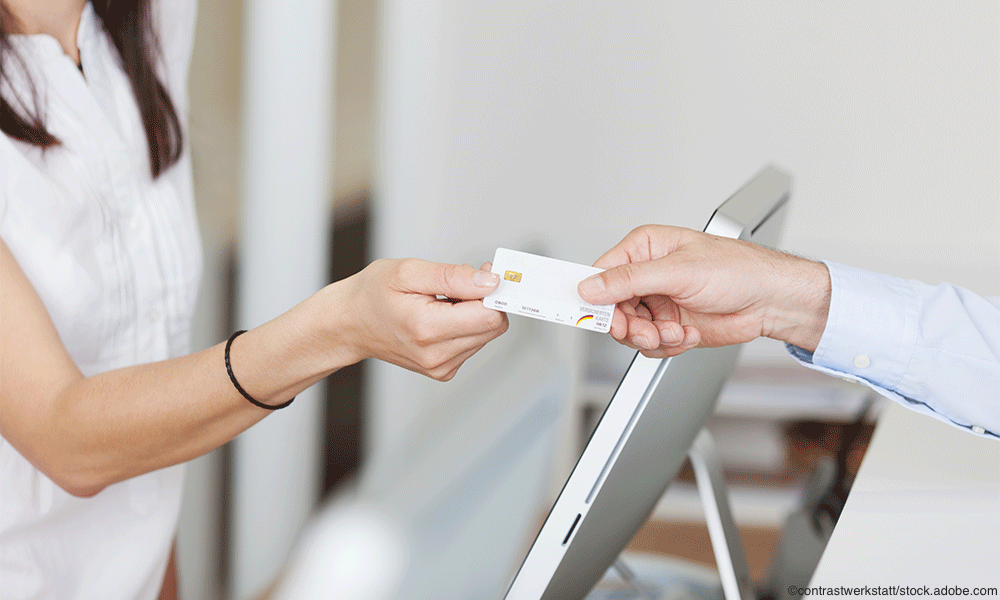How your payment process impacts the patient experience
More and more providers have experienced diminished returns as patient payments languish due to outdated, ineffective communication methods which do not meet today’s patient expectations.

Healthcare has gone through a dramatic evolution in recent years, from comprehensive medical reporting systems to interactive patient care. Yet one area in particular remains mired in the past: medical payment processes.
More and more providers have experienced diminished returns as patient payments languish due to outdated, ineffective communication methods which do not meet today’s patient expectations. Such antiquated payment systems miss the mark when it comes to evolution of patient-centric care and ultimately propagate patient dissatisfaction to the detriment of medical providers everywhere.
Establishing patient-centric payment processes
Just how important is patient experience to patient retention and revenue? The data is clear: two-thirds of consumers would switch providers for a better payment experience.
Healthcare providers must consider the payment process within their patient-centric focus to build trusting relationships and to remain competitive in the market with reliable revenue collection.
Leveraging the latest technology for unified, automated patient billing can help accomplish both: An omni-channel collections platform not only maximizes patient balance resolution, but also simplifies patient collections and maintains peace of mind.
Time-of-service payment collection
Payment processes must be active during the time-of-service. The billing process should be addressed when patients are in the office and available to pay in person. Two missed $50 copays per day could equal an annual loss of $25,000, no small amount when it comes to running a clinic. While office staff may not enjoy the conversation around the payment process, there are ways to simplify it for them and the patient.
A unified patient billing system combined with a payment terminal can process time-of-service collection in a connected way to improve efficiency and ease of use. These terminals support immediate collection resolution and accept debit or credit cards, Apple Pay, Google Pay, Microsoft Pay and contactless pay. Some can even retain card on file and electronic card authorization to make future payments faster and more convenient.
Integrated technology simplifies the patient experience and drives more revenue while increasing trust in the provider/patient relationship by providing one click in-office secure payments and payment authorization within seconds.
Post-service payment collection
Digital forms of communication have become the norm in our society, including how people consistently manage their bills. Recent research from U.S. Bank shows a distinct trend in preferences to pay bills using digital options via portal, mobile applications, contactless debit or credit card or other apps such as PayPal, Zelle or Venmo.
Those preferences translate to healthcare billing as well. Eighty-five percent of consumers would prefer to pay healthcare bills using a mobile payment system. But healthcare providers continue to lag in their response. In fact, 56% continue to use paper and manual collection processes. The new reality is clear: Patients want the freedom and flexibility to pay their bills where and how they find it most convenient, including from the device in their pocket. They expect a mobile and simplified transaction experience, similar to the consumer world.
Adopting an omni-channel collections platform allows providers to automate payment communications and reminders in a reliable cadence with easy-to-read statements and alerts for outstanding balances through text, email and traditional paper statements with QR codes for simple click and pay. This way patients can be reached at the right time on the right device. Multiple payment options make it easier than ever for patients to pay in whichever method works for them.
Patient experience is paramount
As healthcare continues to evolve into more collaborative provider/patient relationships, a customer-centric view must encompass more than care plans and face-to-face appointments. It must extend into all facets of the patient experience including billing and collections. Providers can accomplish this by adopting an omni-channel payment platform with the ability to collect payment at time-of-service, communicate in ways patients prefer to be contacted, offer multiple payment options and send updates in a consistent cadence. Doing so will not only make patients happier and more likely to stay current in their collections, but also increase the likelihood that they will stay with the same provider.
Providers who switch to an integrated collections platform typically see an immediate increase in payments and happier patients. It’s time to step into the next evolution of payment processes and place the patient front and center in the experience.
d'Artagnan Osborne is the general manager of payment solutions at Kareo, where he leads the payments business unit. Kareo and PatientPop merged in November 2021 to form Tebra, creating an all-in-one practice success platform to build the independent practices of the future. d'Artagnan is a business and technology leader with over 20 years of experience building ahead-of-the-curve SaaS products from concept to commercialization. In addition, he has delivered cloud-based software solutions that help drive the modernization of industries.